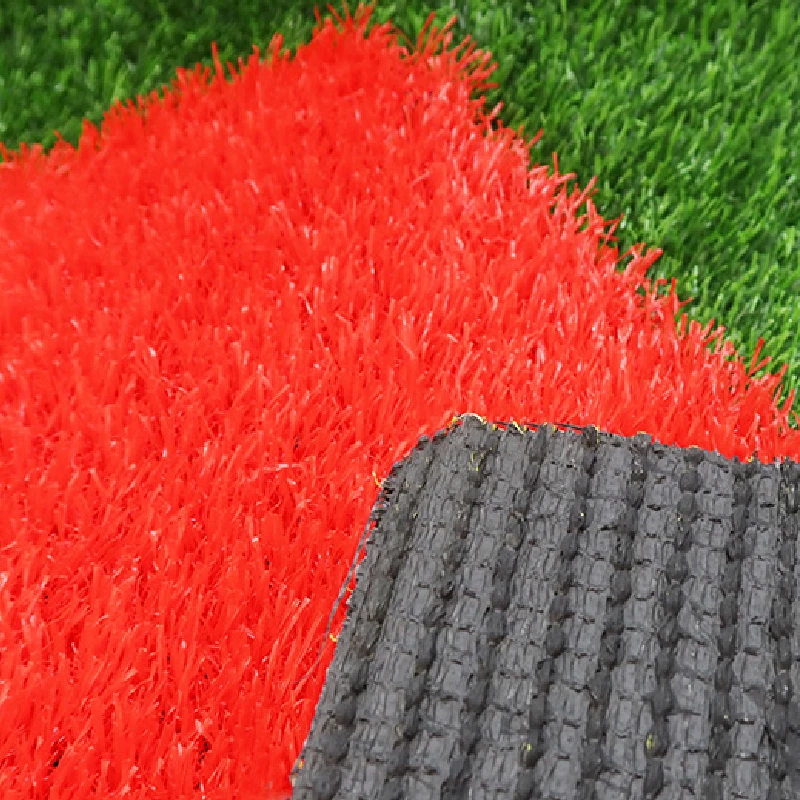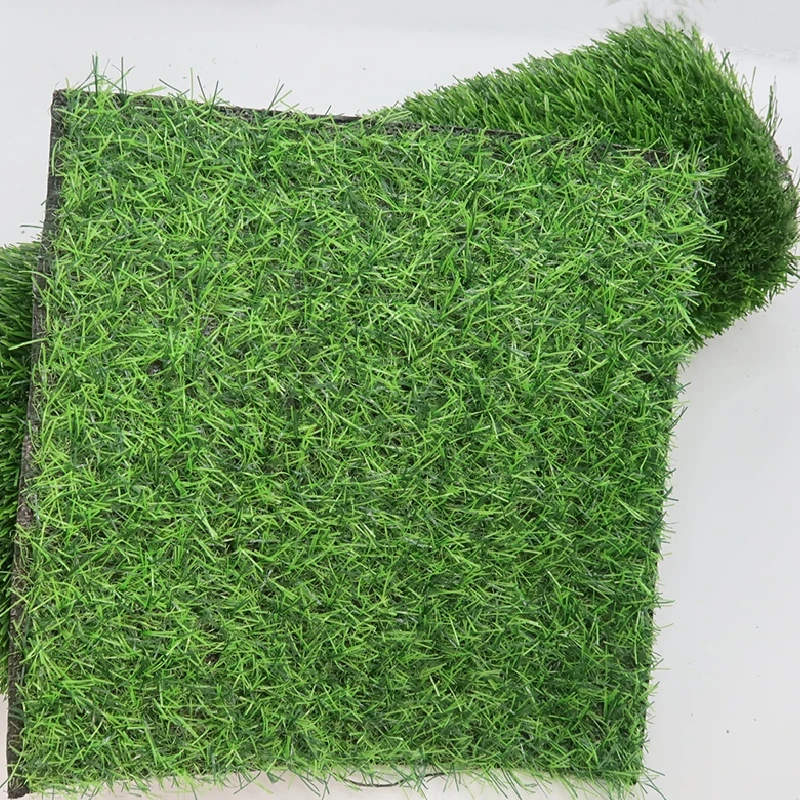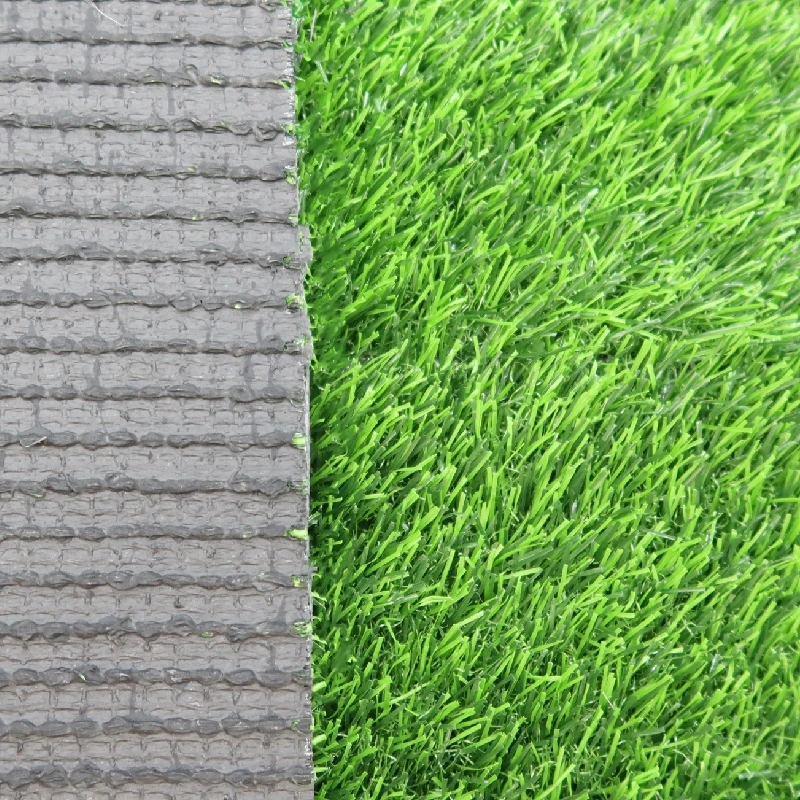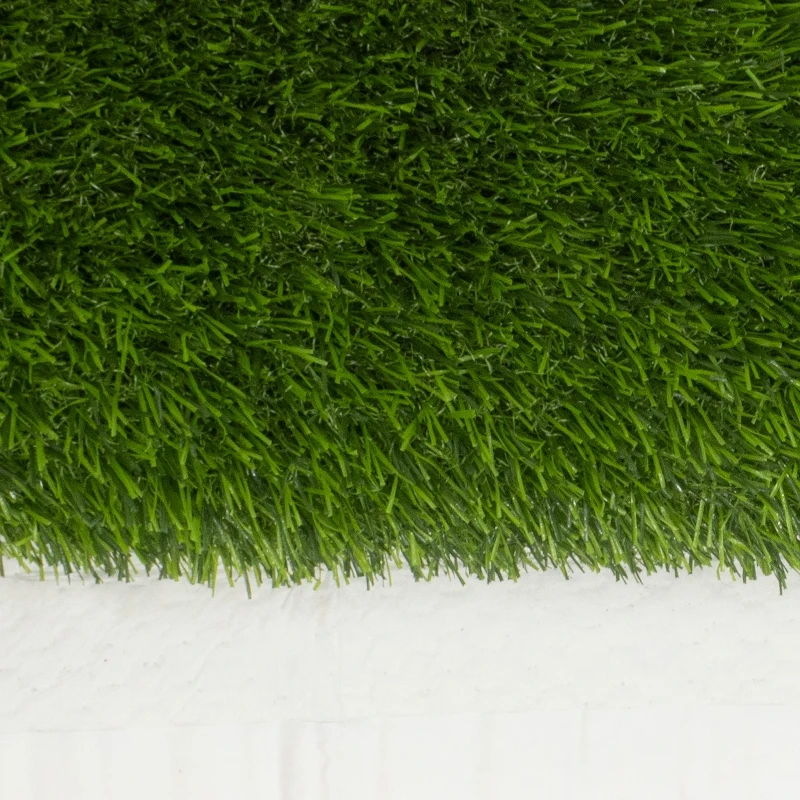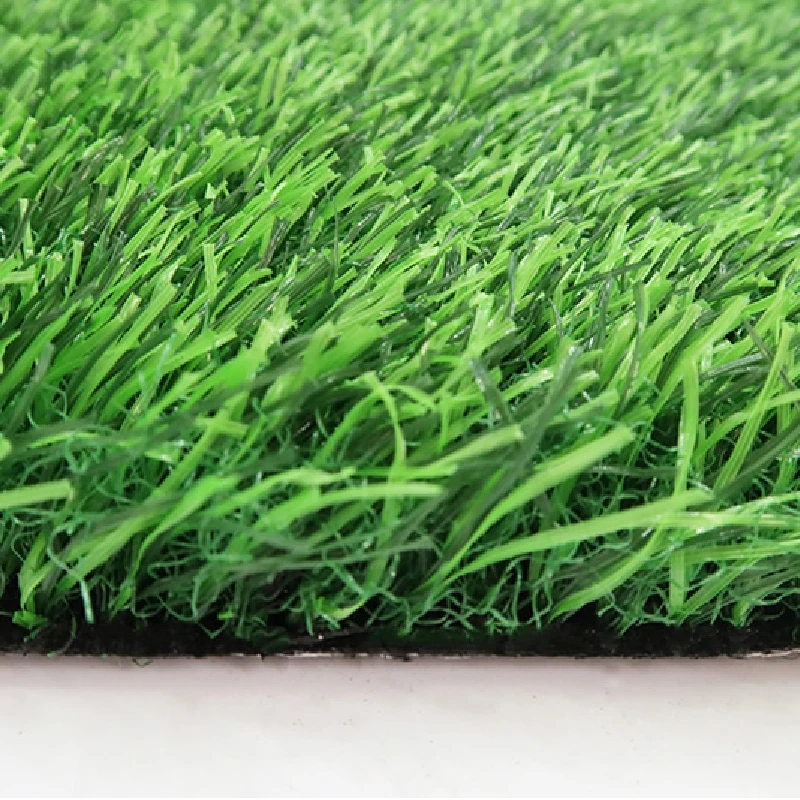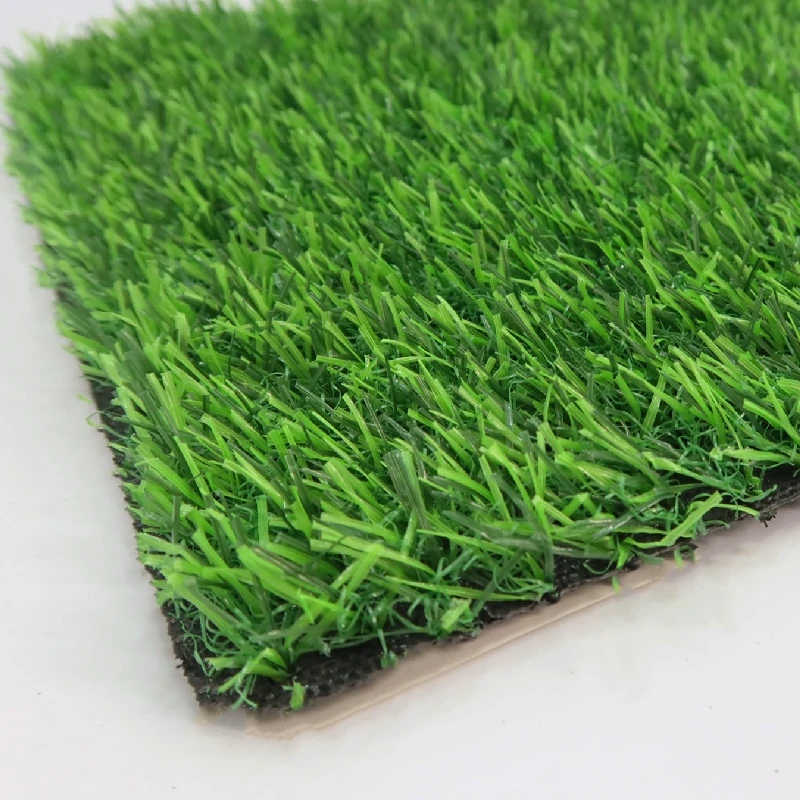Realistic Artificial Grass for Interior & Outdoor Decor
Aug . 21, 2025 21:00 Back to list
The Evolution of Modern Landscaping: Industry Trends in artificial grass
The global landscaping and interior design industries are undergoing a significant transformation, driven by demands for sustainability, low maintenance, and aesthetic versatility. Within this evolution, the adoption of artificial grass has emerged as a pivotal trend, redefining how businesses approach both outdoor and indoor greening solutions. Market analysis indicates a robust compound annual growth rate (CAGR) for the artificial grass market, projected to reach over USD 4.5 billion by 2027, propelled by increasing urbanization, water scarcity concerns, and a rising preference for durable, all-weather surfacing.
Historically, synthetic turf was predominantly associated with sports fields. However, advancements in material science and manufacturing processes have vastly expanded its applications. Today, the appeal of artificial grass extends far beyond athletics, permeating commercial landscaping, public parks, educational institutions, and notably, interior design. The shift towards sustainable and practical solutions positions artificial grass as a crucial component for architects, designers, and facility managers looking to create visually appealing, eco-efficient, and functional spaces without the perennial challenges of natural turf management.
Current industry trends highlight an increasing demand for specialized products, such as fake grass for decoration and solutions tailored for high-traffic commercial environments. Innovations in fiber technology, backing materials, and infill systems are leading to products that offer enhanced realism, superior durability, and improved environmental performance. For B2B stakeholders, understanding these trends is essential for strategic planning, ensuring investments in green infrastructure align with long-term operational efficiency and aesthetic goals.
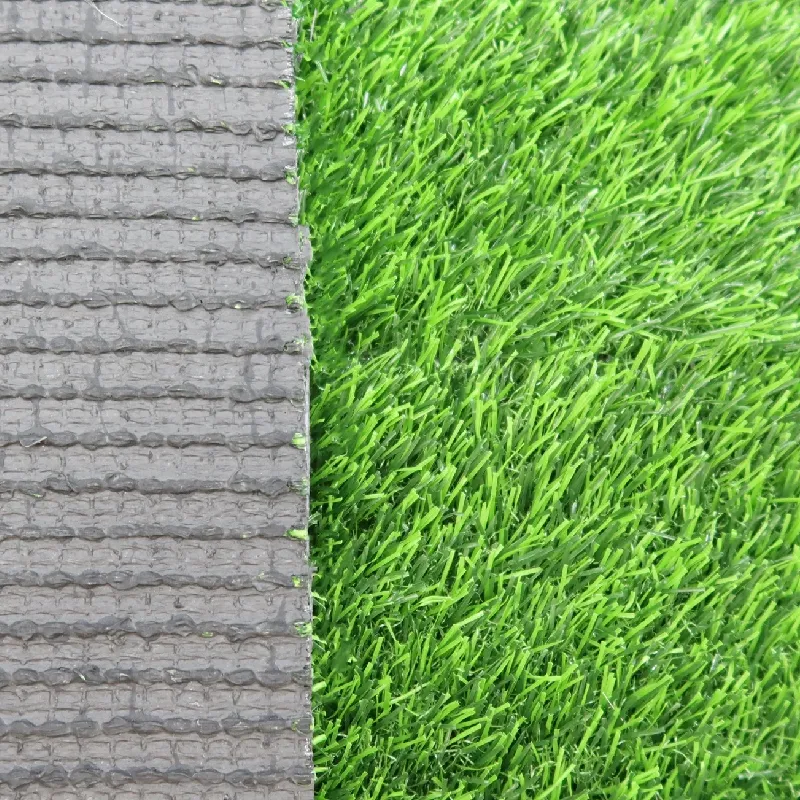
The Science Behind Synthetic Turf: Materials and Manufacturing Excellence
The sophisticated engineering of artificial grass involves a multi-stage manufacturing process, ensuring high-performance, durability, and aesthetic fidelity. Understanding this process is key to appreciating the product's technical advantages.
Core Materials: Durability Meets Aesthetics
The primary components of artificial grass are synthetic fibers, typically made from polyethylene (PE), polypropylene (PP), or nylon. Polyethylene is favored for its soft, natural feel and excellent resilience, making it ideal for high-traffic areas and landscaping. Polypropylene offers superior durability and stiffness, often used for curly thatch layers, enhancing realism and blade support. Nylon, while more expensive, provides exceptional strength and abrasion resistance, sometimes used in specialized applications where extreme wear is expected.
The backing material is equally critical, commonly composed of two layers: a primary backing (usually woven polypropylene, PP) and a secondary backing (latex or polyurethane, PU). The primary backing provides dimensional stability, while the secondary backing binds the tufted fibers securely and adds structural integrity. Polyurethane backings offer superior resistance to temperature fluctuations, moisture, and delamination, contributing to a longer product lifespan compared to traditional latex options.
Manufacturing Process: From Yarn to Turf
- Yarn Extrusion: Raw polymer pellets (PE, PP, or nylon) are melted and extruded through spinnerets to form individual synthetic fibers. During this stage, UV stabilizers and color pigments are added to ensure colorfastness and resistance to environmental degradation. The fiber's shape (e.g., C-shape, W-shape, V-shape, diamond) significantly influences its resilience, anti-glare properties, and natural appearance.
- Twisting and Bundling: Extruded fibers are twisted into bundles, often incorporating a "thatch" layer – shorter, curled fibers (usually PP) that mimic dead grass, enhancing realism and providing cushioning and blade support.
- Tufting: This is the core process, similar to carpet manufacturing. Bundles of yarn are fed into large tufting machines that stitch the fibers into the primary backing material (PP woven fabric). The "gauge" refers to the distance between the stitching lines, impacting density. "Pile height" is the length of the grass blades.
- Coating/Laminating: After tufting, the reverse side of the primary backing is coated with a secondary backing material, typically liquid latex or polyurethane. This coating securely locks the tufted fibers in place, preventing pull-out (known as "tuft bind") and adding strength and stability to the entire turf roll. The coating process requires precise temperature and humidity control to ensure uniform application and proper curing.
- Drying and Curing: The coated turf undergoes a drying and curing process, often in large ovens, to solidify the latex or PU backing. This step is crucial for achieving optimal bond strength and durability.
- Perforating: Drainage holes are punched through the backing at regular intervals. These perforations are vital for water permeability, preventing water accumulation and ensuring proper drainage, especially important for outdoor installations and spill-prone indoor areas.
- Quality Control & Finishing: Throughout the entire process, rigorous quality control checks are performed. This includes testing for tuft bind strength, pile height consistency, backing integrity, UV stability, and overall appearance. Rolls are then cut to specified dimensions and packaged for shipment.
Adherence to international standards such as ISO 9001 for quality management and ISO 14001 for environmental management is paramount for reputable manufacturers. These standards ensure consistent product quality, ethical manufacturing practices, and a commitment to continuous improvement. For applications requiring specific performance criteria, additional testing against standards like ASTM (American Society for Testing and Materials) for material properties or specific fire safety ratings (e.g., EN 13501-1 for Europe, ASTM E648 for USA) may be conducted.
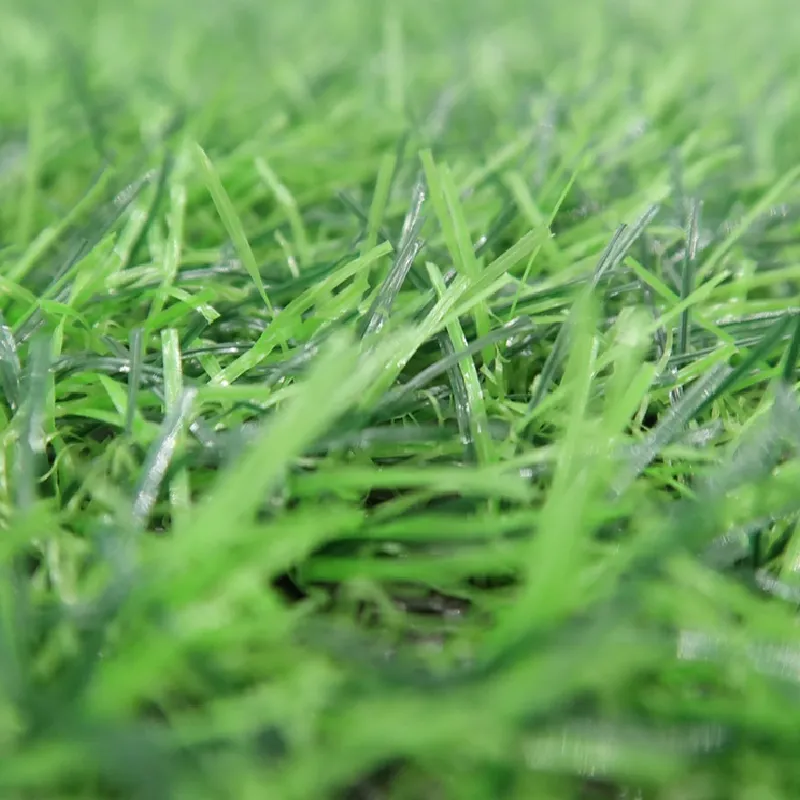
Technical Specifications & Performance Parameters
Selecting the optimal artificial grass requires a thorough understanding of its technical parameters. These specifications dictate performance, durability, and aesthetic suitability for various applications.
Key Parameters Explained:
- Pile Height: The length of the grass blade from the backing to the tip. For fake grass for decoration, pile heights typically range from 15mm to 40mm, offering different levels of lushness. Shorter piles are easier to clean and ideal for high-traffic indoor areas; longer piles provide a more luxurious, soft feel.
- Dtex (Decitex): A measure of the linear mass density of the yarn, indicating the weight in grams of 10,000 meters of fiber. Higher Dtex values generally mean thicker, more robust fibers, contributing to durability and resilience. For example, a Dtex of 6,600 to 12,000 is common for quality landscaping turf.
- Gauge: The distance between two adjacent stitch lines on the backing. Common gauges include 3/8 inch, 5/8 inch, and 3/4 inch. A smaller gauge often indicates a denser turf, with more stitches per square meter.
- Stitches per Meter/Density: The number of stitches along one meter of a stitch line, or the overall density of tufts per square meter. Higher density contributes to a fuller, more natural look and enhanced durability. Typical densities for quality landscape grass range from 14,000 to 22,000 stitches/m².
- Backing Material: As discussed, primary backing (PP woven) and secondary backing (latex or polyurethane). PU backing offers superior dimensional stability and drainage hole retention, along with greater resistance to extreme temperatures and moisture, leading to a longer lifespan, often exceeding 10-15 years.
- Drainage Rate: The rate at which water can permeate through the turf. Quality artificial grass can have drainage rates exceeding 250 inches per hour per square yard, critical for outdoor applications and ensuring indoor spills do not accumulate.
- UV Stability: Measured by accelerated weathering tests (e.g., ASTM G155), indicating the turf's resistance to fading and degradation from ultraviolet radiation. Reputable products incorporate advanced UV inhibitors, ensuring colorfastness for over 8-10 years even in harsh sunlight.
- Fire Resistance: Crucial for indoor and commercial applications, where products must meet specific fire safety standards (e.g., Class A or B ratings, depending on regional codes). Tests typically assess surface flammability and smoke development.
Typical Artificial Grass Parameters Table:
These parameters directly influence the suitability of artificial grass for specific applications, ranging from high-traffic commercial spaces to delicate aesthetic installations of artificial grass interior. For instance, a higher Dtex and density would be preferable for a commercial lobby experiencing significant foot traffic, while a softer, higher pile might be chosen for an interior decor accent.
Strategic Advantages of Implementing Artificial Grass
The proliferation of artificial grass in commercial and residential sectors is a testament to its compelling advantages over natural turf. These benefits translate directly into long-term cost savings, enhanced aesthetics, and improved operational efficiency for businesses.
Economic and Environmental Benefits:
- Significant Water Conservation: In an era of increasing water scarcity, artificial grass eliminates the need for irrigation, leading to substantial water bill reductions. Estimates suggest that a typical commercial lawn can save millions of liters of water annually by switching to synthetic turf.
- Reduced Maintenance Costs: Bid farewell to mowing, fertilizing, weeding, and pest control. Artificial grass requires minimal upkeep, drastically cutting labor and equipment costs associated with natural lawn care. This operational efficiency is particularly appealing for large commercial properties or facilities with extensive green spaces.
- No Pesticides or Herbicides: Eliminating chemical treatments contributes to a healthier environment, protecting local ecosystems, groundwater, and reducing chemical exposure for employees and visitors. This aligns with corporate sustainability initiatives and health & safety protocols.
- Durability and Longevity: High-quality artificial grass is engineered to withstand heavy foot traffic, extreme weather conditions, and UV radiation, maintaining its lush appearance for 10-15 years or more with proper care. This long lifespan ensures a strong return on investment.
Aesthetic and Functional Superiority:
- Year-Round Greenery: Unlike natural grass, which can turn brown in drought or cold, artificial grass maintains a vibrant, consistent green appearance regardless of season or climate, enhancing curb appeal and property value year-round.
- Versatile Design Potential: The adaptability of artificial grass interior allows for innovative design applications, from green walls and rooftop gardens to bespoke indoor landscapes and unique flooring solutions. Its consistent texture and color provide a uniform canvas for creative architectural and interior design projects.
- Cleanliness and Hygiene: No mud, no grass stains, and significantly reduced pollen count. This makes artificial turf ideal for areas where cleanliness is paramount, such as childcare facilities, healthcare environments, or retail spaces. It's also pet-friendly and easy to clean.
- Enhanced Safety: Properly installed artificial grass can offer a consistent, non-slip surface, reducing trip hazards. When paired with shock-absorbing underlays, it can provide critical fall height protection for playgrounds, making it a safer alternative for recreational areas.
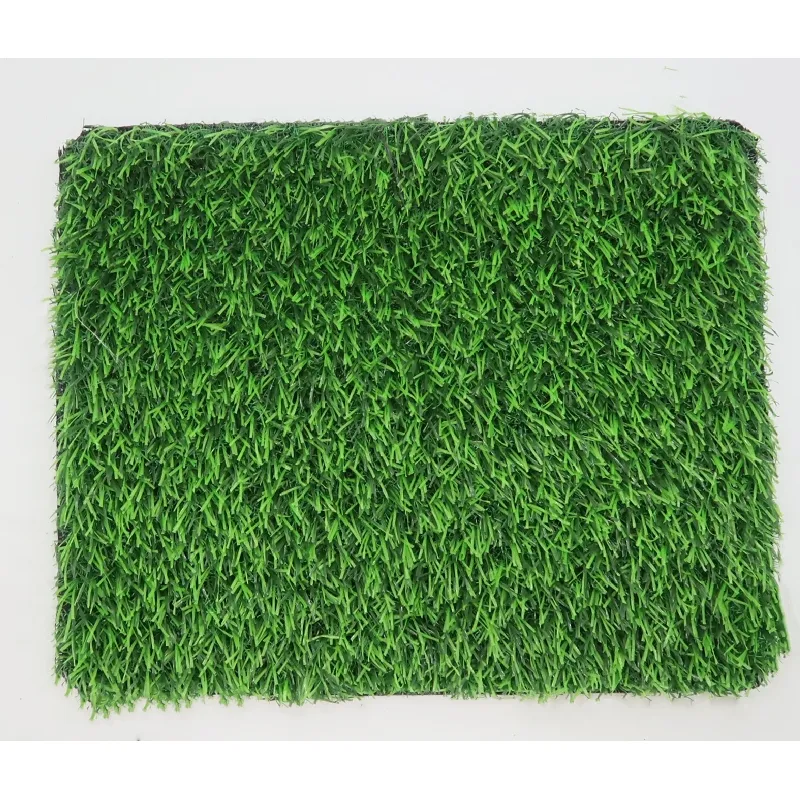
For B2B entities, these advantages translate into tangible returns: reduced operational overhead, improved brand image through sustainable practices, and the ability to create visually stunning and highly functional environments that impress clients and enhance user experience. The strategic decision to invest in fake grass for decoration or high-performance turf is increasingly becoming a benchmark for forward-thinking businesses.
Diverse Application Scenarios and Innovative Uses
The versatility of artificial grass allows its integration into a wide array of commercial and public environments, extending far beyond traditional sports fields. Its unique attributes make it an ideal choice for challenging or unconventional spaces, particularly in interior design.
Primary Application Industries:
- Commercial Landscaping: For corporate campuses, business parks, and public squares, artificial grass provides a consistently manicured appearance without the intensive maintenance. It ensures a professional, inviting exterior year-round.
- Retail & Hospitality: Enhances customer experience in shopping malls, hotels, restaurants, and cafes. Used for entrance areas, rooftop lounges, themed dining spaces, or as eye-catching display backdrops (fake grass for decoration). Its low maintenance ensures continuous pristine presentation.
- Educational Institutions: Provides durable, safe, and clean play areas for schools and universities, reducing allergies and mud. Also used for common areas and specialized learning environments.
- Healthcare Facilities: Creates calming, natural-looking outdoor spaces for patients and visitors without the allergens, dust, or maintenance of natural grass. Can also be utilized in therapeutic indoor environments.
- Event Management: Ideal for temporary installations at trade shows, exhibitions, and corporate events. Its ease of installation and removal, coupled with its consistent aesthetic, makes it a preferred choice for creating immersive and memorable environments.
- Public Works & Infrastructure: Used for medians, embankments, and areas difficult to access for maintenance, offering erosion control and aesthetic improvement with minimal upkeep.
Specialized Applications for Artificial Grass Interior Decoration:
The application of artificial grass interior is where creativity truly flourishes, transforming ordinary indoor spaces into vibrant, dynamic environments. The product's consistent appearance, low maintenance, and absence of allergens make it uniquely suited for:
- Office Green Zones: Creating indoor "parks" or relaxation areas within corporate offices, promoting employee well-being and productivity. This includes flooring, wall accents, or even custom furniture elements.
- Retail Store Displays: Eye-catching elements for window displays, product showcases, or entire themed sections, drawing customer attention and enhancing the shopping experience.
- Residential Interior Design (B2B projects): For luxury apartments, model homes, or multi-family living spaces, incorporating artificial grass interior for unique balconies, indoor courtyards, or children's playrooms.
- Exhibition Booths & Pop-Up Shops: Quickly and effectively establishing a distinct brand presence, offering a welcoming and memorable floor or wall covering that stands out.
- Indoor Pet Facilities: Creating hygienic and easy-to-clean indoor pet relief areas within commercial buildings, pet hotels, or veterinary clinics.
- Themed Entertainment Venues: For escape rooms, theme parks, or indoor adventure centers, synthetic turf contributes to immersive environments, mimicking natural landscapes without real-world constraints.
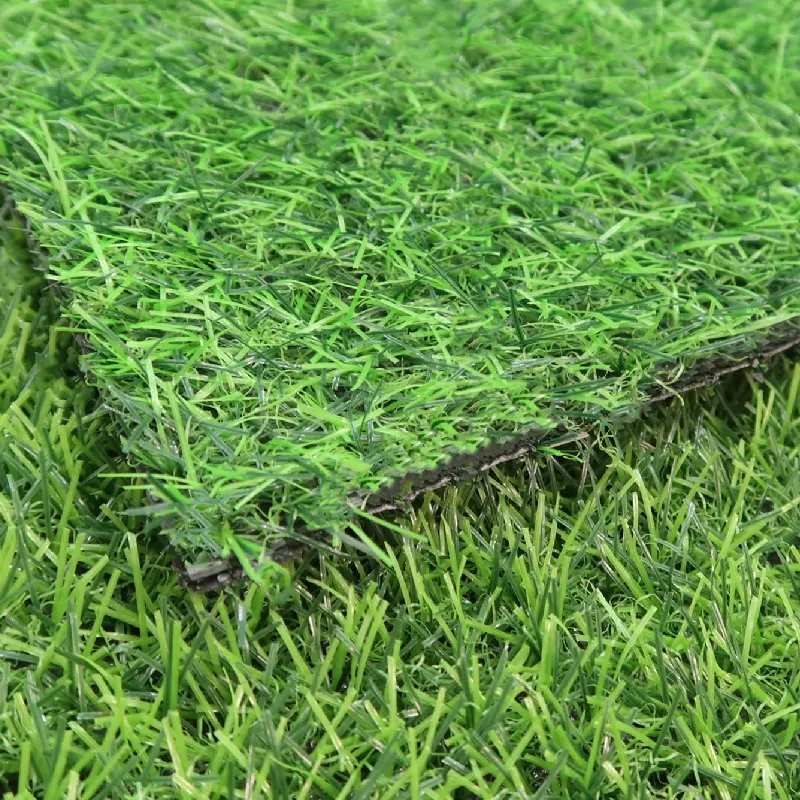
The seamless integration of fake grass for decoration into these diverse settings underscores its adaptability as a modern design and infrastructure solution. Its ability to provide green aesthetics where natural grass is impractical due to light, water, or maintenance constraints, makes it an invaluable asset for contemporary design and construction projects.
Choosing the Right Partner: Manufacturer Comparison and Selection Criteria
The global artificial grass market is competitive, with numerous manufacturers offering a diverse range of products. For B2B buyers, selecting the right supplier is paramount to ensuring product quality, project success, and long-term satisfaction. A thorough evaluation process should consider several critical factors beyond just price.
Key Evaluation Criteria for Artificial Grass Manufacturers:
- Product Quality & Durability: Inquire about fiber materials (PE, PP, Nylon, Dtex), backing systems (Latex vs. PU), and UV resistance ratings. Request sample swatches to assess feel, resilience, and color. High-quality artificial grass should feel soft yet robust, and its fibers should rebound well after compression.
- Certifications and Compliance: Verify international certifications like ISO 9001 (Quality Management), ISO 14001 (Environmental Management). For specific applications, check for CE marking, RoHS compliance, REACH compliance (for chemical safety), and specific fire retardancy ratings (e.g., ASTM E648, EN 13501-1). These attest to the manufacturer's commitment to quality and safety.
- Manufacturing Process Transparency: A reputable manufacturer will be transparent about their production facilities, quality control procedures, and testing protocols. Understanding their manufacturing standards provides insight into the consistency and reliability of their products.
- Customization Capabilities: For unique B2B projects, especially those involving artificial grass interior or bespoke landscaping, the ability to customize pile height, Dtex, color blends, and backing types is crucial.
- Research & Development (R&D): Leading manufacturers invest heavily in R&D to innovate new fiber technologies, enhance realism, improve drainage, and develop more sustainable products. This commitment indicates a forward-thinking partner.
- Warranty & After-Sales Support: A robust warranty (typically 8-15 years for UV degradation and material defects) signifies confidence in their product. Evaluate their responsiveness, technical support, and replacement policies.
- Service Experience & Reputation: Look for manufacturers with a proven track record of successful B2B projects, positive client testimonials, and long-term industry experience (e.g., 10+ years in the synthetic turf industry). Review their portfolio of past installations.
- Logistics and Delivery: Assess their capacity for timely production and efficient global logistics, especially for large-scale orders. Clear communication on lead times and shipping is vital for project scheduling.
Manufacturer Comparison Considerations:
While specific company names are beyond the scope, here's a conceptual comparison framework for different types of artificial grass suppliers:
By meticulously evaluating these factors, B2B purchasers can identify a manufacturer like Hoyarn Grass that aligns with their project's specific requirements, budget, and long-term performance expectations for their artificial grass needs.
Customization Solutions for Unique Commercial Projects
In the B2B sector, particularly for large-scale commercial, architectural, or design projects, off-the-shelf artificial grass products may not always meet the precise aesthetic or performance requirements. This is where customized solutions become invaluable, allowing businesses to tailor synthetic turf to their exact specifications and achieve truly distinctive results.
Tailoring Your Artificial Grass:
Leading manufacturers offer a spectrum of customization options, ensuring that the final product aligns perfectly with the project's vision and functional demands:
- Pile Height & Density Adjustment: For instance, a commercial play area might require a higher pile height (e.g., 40mm) for enhanced cushioning and fall protection, whereas a rooftop patio or a display for fake grass for decoration might benefit from a shorter, denser pile (e.g., 20mm) for a cleaner, more manicured look and easier cleaning.
- Yarn Type & Dtex Customization: Depending on expected foot traffic and desired resilience, the specific blend of PE and PP fibers and their Dtex value can be optimized. For high-traffic commercial pathways, a higher Dtex fiber ensures greater durability and anti-crushing properties.
- Color Blending & Multi-Tone Options: To achieve maximum realism or a specific brand aesthetic, manufacturers can blend multiple shades of green, brown (thatch), and even unique accent colors into the yarn. This allows for turf that perfectly mimics local natural grass varieties or integrates seamlessly into corporate branding guidelines, especially for artificial grass interior applications.
- Backing System Selection: While latex is standard, opting for a polyurethane (PU) backing provides superior dimensional stability, greater resistance to temperature extremes, and a longer overall lifespan, particularly critical for large outdoor installations or high-moisture environments. Manufacturers can also offer specific perforations for specialized drainage needs.
- Infill Solutions: While not part of the turf manufacturing itself, manufacturers can advise on infill options (e.g., silica sand, rubber granules, organic infills) that complement the turf's performance for specific applications, such as enhancing blade support, cushioning, or cooling.
- Fire Retardancy Treatments: For indoor applications, especially in public buildings or retail spaces, custom treatments can enhance the turf's fire resistance to meet stringent local building codes and safety regulations.
- Custom Roll Widths & Lengths: While standard roll sizes exist, some projects might benefit from custom widths or longer lengths to minimize seams and reduce installation time and material waste, resulting in a more cohesive appearance.
- Branding Integration: For sports fields or corporate events, logos, lines, and patterns can be intricately cut and inlaid directly into the artificial grass, offering a durable and visually impactful branding opportunity.
Engaging with a manufacturer that offers robust customization capabilities ensures that the synthetic turf solution is not merely a product but an integral part of a holistic design strategy. This collaborative approach allows architects, landscape designers, and project managers to push creative boundaries while adhering to performance and budgetary constraints.
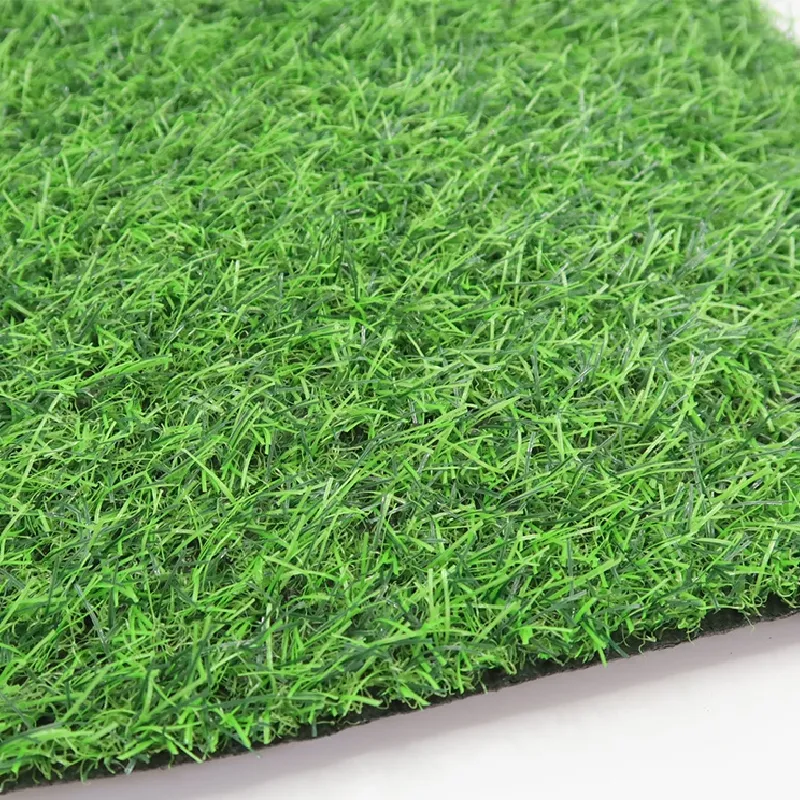
Whether it's a vibrant green carpet for a corporate event, a durable yet soft surface for an indoor playground, or a bespoke vertical garden, the ability to customize ensures that artificial grass can be perfectly adapted to virtually any commercial vision.
Case Studies and Success Stories: Realizing Value with Artificial Grass
The practical benefits of artificial grass are best illustrated through real-world applications where businesses have achieved significant aesthetic, operational, and financial advantages. These case studies highlight the versatility and impact of synthetic turf across various sectors.
Case Study 1: Corporate Campus Landscaping Enhancement
- Client: A Fortune 500 tech company seeking to reduce water consumption and maintenance costs across its sprawling campus, while maintaining a pristine green aesthetic.
- Challenge: Maintaining acres of natural grass in a semi-arid climate required extensive irrigation and a large landscaping crew, leading to high operational expenses and environmental concerns. Seasonal browning also impacted the campus's visual appeal.
- Solution: Installation of 150,000 sq ft of high-density, UV-stabilized artificial grass with a specialized drainage system.
- Results:
- Water Savings: Over 10 million gallons of water saved annually, contributing significantly to the company's sustainability goals.
- Cost Reduction: 70% reduction in annual landscaping maintenance costs (labor, water, chemicals).
- Aesthetic Consistency: A perpetually green and manicured campus landscape, enhancing corporate image and employee morale. The initial investment was recouped within 4 years through cost savings.
Case Study 2: Innovative Artificial Grass Interior for a Modern Retail Space
- Client: A leading fashion retailer aiming to create an immersive, nature-inspired shopping experience in its flagship urban store.
- Challenge: Limited natural light and the impracticality of maintaining live plants for a large-scale interior greening project. The design required a unique, durable, and visually appealing ground cover that could withstand high foot traffic.
- Solution: Customized artificial grass interior (low pile, high Dtex for durability) installed across 5,000 sq ft of floor space and integrated into vertical wall panels, creating a "grassland" effect. Specific fire-retardant treatments were applied to meet commercial building codes.
- Results:
- Enhanced Customer Experience: Created a unique and memorable ambiance, distinguishing the store from competitors and increasing dwell time.
- Operational Simplicity: Zero maintenance requirements for watering, pruning, or pest control, ensuring pristine appearance without dedicated staff.
- Design Versatility: Allowed for creative architectural integration that would be impossible with natural elements, proving the aesthetic power of fake grass for decoration.
Case Study 3: Public Urban Playground Transformation
- Client: A municipal parks department seeking a durable, safe, and clean surface for a high-usage urban playground.
- Challenge: Natural grass in playgrounds quickly wears down to mud or dirt, creating safety hazards, maintenance nightmares, and an unappealing environment. Traditional rubber surfacing was not desired due to heat retention.
- Solution: Installation of specialized playground artificial grass with integrated shock-absorbing underlay (critical fall height rated up to 10 feet), ensuring maximum safety for children. The turf chosen had a higher Dtex and density for superior wear resistance.
- Results:
- Enhanced Safety: Provided consistent cushioning, significantly reducing injury risk from falls.
- All-Weather Playability: The playground remained usable year-round, regardless of rain or drought, without mud or dust.
- Reduced Maintenance: Eliminated the need for constant re-seeding, patching, or mulch replenishment, lowering operational costs by 60%.
These examples underscore how artificial grass solutions, when strategically implemented and customized, provide substantial long-term value, addressing specific challenges and contributing to the success of diverse commercial projects.
Quality Assurance, Certifications, and Testing Protocols
For B2B procurement of artificial grass, rigorous quality assurance and adherence to international standards are non-negotiable. These elements provide critical assurance of product performance, safety, and longevity, fostering trust between manufacturer and client.
Industry Certifications and Standards:
- ISO 9001 (Quality Management System): Certifies that a manufacturer consistently provides products and services that meet customer and regulatory requirements, and that they are committed to continuous improvement. This is a fundamental benchmark for any reliable supplier of artificial grass.
- ISO 14001 (Environmental Management System): Demonstrates a commitment to minimizing environmental impact throughout the manufacturing process, including waste management, resource efficiency, and pollution prevention. Relevant for businesses with strong sustainability mandates.
- CE Marking: Mandatory for products sold within the European Economic Area, indicating compliance with health, safety, and environmental protection standards. Crucial for artificial grass interior applications in Europe.
- REACH & RoHS Compliance:
- REACH (Registration, Evaluation, Authorisation and Restriction of Chemicals): A European Union regulation addressing the production and use of chemical substances and their potential impacts on human health and the environment. Ensures that chemical components in artificial grass are safe.
- RoHS (Restriction of Hazardous Substances): Restricts the use of specific hazardous materials in electrical and electronic products, and by extension, often indicates a broader commitment to non-toxic materials in manufacturing, relevant for general consumer and commercial products.
- ASTM International Standards (American Society for Testing and Materials): A globally recognized developer of voluntary consensus standards. For artificial grass, relevant ASTM standards include tests for:
- G155: Standard Practice for Operating Xenon Arc Light Apparatus for Exposure of Nonmetallic Materials, used for accelerated UV stability testing.
- D1335: Standard Test Method for Tuft Bind of Pile Yarn Floor Coverings, assessing how well fibers are secured to the backing.
- F1292: Standard Specification for Impact Attenuation of Surfacing Materials Within the Use Zone of Playground Equipment (for playground turf).
- E648: Standard Test Method for Critical Radiant Flux of Floor-Covering Systems Using a Radiant Heat Energy Source (for fire resistance).
- EN Standards (European Norms): Similar to ASTM, but specific to Europe, covering aspects like fire classification (e.g., EN 13501-1 for building products), environmental performance, and material properties.
Internal Testing & Data Verification:
Beyond external certifications, reputable manufacturers perform extensive in-house testing at every stage of production. This includes:
- Raw Material Inspection: Verifying the quality and composition of polymers, UV stabilizers, and pigments before extrusion.
- Fiber Resilience Testing: Simulating foot traffic to assess how quickly blades rebound and maintain their upright position.
- Tuft Pull-Out Strength: Measuring the force required to pull individual fibers from the backing, ensuring long-term durability against wear. Typical values for quality turf are well above 8 lbs per tuft.
- Drainage Performance: Testing water flow rates through the turf to confirm efficient drainage.
- Colorfastness & UV Degradation: Utilizing accelerated weathering chambers to simulate years of sun exposure and evaluate color retention and material integrity. Data shows high-quality turf experiences less than 10% color change after 10,000 hours of accelerated weathering.
When evaluating a supplier, always request technical data sheets, test reports from independent third-party laboratories, and copies of relevant certifications. This level of transparency and commitment to documented quality provides robust assurance for any B2B investment in artificial grass.
Frequently Asked Questions (FAQ) about Artificial Grass
Q1: Is artificial grass safe for children and pets?
A: Absolutely. High-quality artificial grass is manufactured using non-toxic materials (e.g., lead-free, heavy metal-free polymers) and often undergoes testing for harmful substances (e.g., REACH, RoHS compliance). For playgrounds, specialized turf with shock-absorbing underlays meets critical fall height ratings, enhancing safety. For pets, it provides a clean, durable, and easy-to-rinse surface that prevents mud and odors with proper drainage and cleaning.
Q2: How long does artificial grass last?
A: The lifespan of high-quality artificial grass typically ranges from 10 to 15 years, and often extends beyond, depending on factors such as usage, climate conditions, and proper installation/maintenance. Products with advanced UV stabilization and durable polyurethane backing tend to have longer service lives, retaining their color and structural integrity for over a decade.
Q3: How do you clean and maintain fake grass for decoration or commercial artificial grass interior?
A: Maintenance for artificial grass is minimal. For general cleaning, simply rinse with water to remove dust and debris. For tougher stains or spills in indoor settings, mild soap and water can be used. Occasional cross-brushing with a stiff broom (against the pile) helps keep the blades upright. For outdoor commercial spaces, a leaf blower or power brush can be used for larger debris. Pet waste should be removed promptly and the area rinsed to prevent odors.
Q4: What is the typical delivery timeframe for large orders?
A: Delivery times for large orders of artificial grass can vary based on quantity, customization requirements, and shipping destination. For standard products, lead times typically range from 2 to 4 weeks after order confirmation and payment. Custom orders may require an additional 1-2 weeks for production. It is crucial to discuss specific project timelines with your supplier to ensure on-time delivery and installation scheduling.
Q5: Is artificial grass environmentally friendly?
A: While not a natural product, artificial grass offers significant environmental benefits, primarily through drastic water conservation (eliminating irrigation needs) and the elimination of harmful pesticides, herbicides, and fertilizers. Modern manufacturing processes are also becoming more energy-efficient, and many products are increasingly recyclable at the end of their long lifespan. The reduction in fuel consumption from mowing equipment also contributes to a lower carbon footprint.
Delivery, Warranty, and Customer Support
A comprehensive commitment to client satisfaction extends beyond product quality to encompass reliable delivery, robust warranty coverage, and responsive customer support. These elements are critical for B2B partners, ensuring peace of mind and successful project execution when procuring artificial grass.
Efficient Delivery Logistics:
Manufacturers with global supply chain expertise can manage complex logistics for large volume orders. This includes:
- Global Shipping Capabilities: Ability to ship artificial grass via sea freight, air cargo, or land transport to various international destinations, ensuring timely arrival for project deadlines.
- Packaging & Protection: Turf rolls are typically wrapped in durable, weather-resistant materials and often secured on pallets to prevent damage during transit. For artificial grass interior products, specialized packaging might be used to maintain pristine condition.
- Real-time Tracking: Providing clients with tracking information for their shipments, allowing for precise scheduling of installation crews and equipment.
- Order Fulfillment Efficiency: Streamlined processes from order confirmation to dispatch, minimizing lead times and ensuring accurate order delivery. Typical lead times for standard products are 15-20 days, while custom solutions may require 25-35 days for manufacturing and pre-shipment checks.
Comprehensive Warranty Coverage:
A strong warranty underscores a manufacturer's confidence in their product's durability and performance. For artificial grass, typical warranty periods range from 8 to 15 years, specifically covering:
- UV Degradation: Protection against significant fading or breakdown of fibers due to ultraviolet radiation. High-quality products should demonstrate minimal (e.g., less than 10%) color loss over the warranty period.
- Material Defects: Coverage for manufacturing faults such as premature fiber degradation, excessive shedding, or backing delamination.
- Pile Integrity: Assurance that the grass blades will maintain their structural integrity and resilience under normal use.
It is crucial for B2B buyers to review the specific terms and conditions of the warranty, including exclusions and the claims process, to fully understand the scope of protection for their fake grass for decoration or commercial turf investment.
Dedicated Customer Support:
Exceptional customer support is integral to a successful B2B partnership. This includes:
- Technical Assistance: Providing expert guidance on product selection, installation best practices, and maintenance protocols for various applications, from large-scale landscaping to intricate artificial grass interior designs.
- Responsive Communication: Prompt replies to inquiries via phone, email, or dedicated client portals, ensuring that project managers and procurement teams receive timely information.
- After-Sales Service: Support extending beyond the sale, including troubleshooting, warranty claims processing, and guidance on long-term product care.
- Project Management Support: For large or complex projects, some manufacturers offer dedicated account managers who provide end-to-end support, from initial consultation and sampling to final delivery and post-installation follow-up.
The combination of robust product quality, efficient logistics, comprehensive warranty, and proactive customer support ensures that investing in artificial grass is a seamless and rewarding experience for businesses and their projects.
Conclusion: The Future of Green Spaces is Synthetic
The landscape of modern design and infrastructure is unequivocally shifting towards more sustainable, efficient, and versatile solutions. Within this paradigm, artificial grass stands as a prime example of technological innovation meeting practical demand. From sprawling commercial properties seeking to drastically reduce water consumption and maintenance costs, to cutting-edge retail environments leveraging fake grass for decoration to create immersive brand experiences, the benefits are clear and quantifiable.
The evolution of manufacturing processes, material science, and stringent quality control protocols has elevated synthetic turf far beyond its early iterations. Today's artificial grass products offer unparalleled realism, exceptional durability, and a compelling return on investment, making them a strategic asset for any forward-thinking business. The ability to customize parameters such as pile height, Dtex, color blends, and backing systems ensures that every project, no matter how unique, can achieve its specific aesthetic and functional goals.
As global challenges like water scarcity intensify and the demand for low-maintenance, aesthetically pleasing green spaces grows, the adoption of artificial grass interior and exterior solutions will only continue to accelerate. For B2B decision-makers, choosing a reputable manufacturer committed to quality, innovation, and comprehensive support is crucial for unlocking the full potential of this transformative material. Investing in high-quality artificial grass is not just an expense; it is a strategic decision that contributes to operational efficiency, environmental stewardship, and enhanced visual appeal, ultimately leading to long-term value creation.
References
- Global Artificial Grass Market Growth, Trends, and Forecasts (2022-2027). (Industry Market Research Report).
- ASTM International. Standard Guide for the Use of Recycled Materials in Artificial Turf Systems. (ASTM F3218-19).
- European Union. Regulation (EC) No 1907/2006 (REACH) and Directive 2011/65/EU (RoHS).
- ISO (International Organization for Standardization). ISO 9001: Quality management systems and ISO 14001: Environmental management systems.
- The Synthetic Turf Council. Guidelines and Specifications for Synthetic Turf Systems.
-
Durable, Eco-Friendly Turf for Balcony | Enhance Your Urban Space
NewsNov.24,2025
-
Turf Between Pavers: Sustainable Green Paving Solutions for Modern Urban Spaces
NewsNov.24,2025
-
Discover the Benefits of Turf and Pavers Backyard | Sustainable Outdoor Design
NewsNov.24,2025
-
Top Quality Artificial Grass – Sustainable, Durable, and Stylish Turf Solutions
NewsNov.24,2025
-
Durable and Eco-Friendly Thick Artificial Grass Solutions | Hoya Grass
NewsNov.24,2025
-
Synthetic Turf: Sustainable Green Solutions for Sports, Industry & Urban Living
NewsNov.24,2025
Products categories



